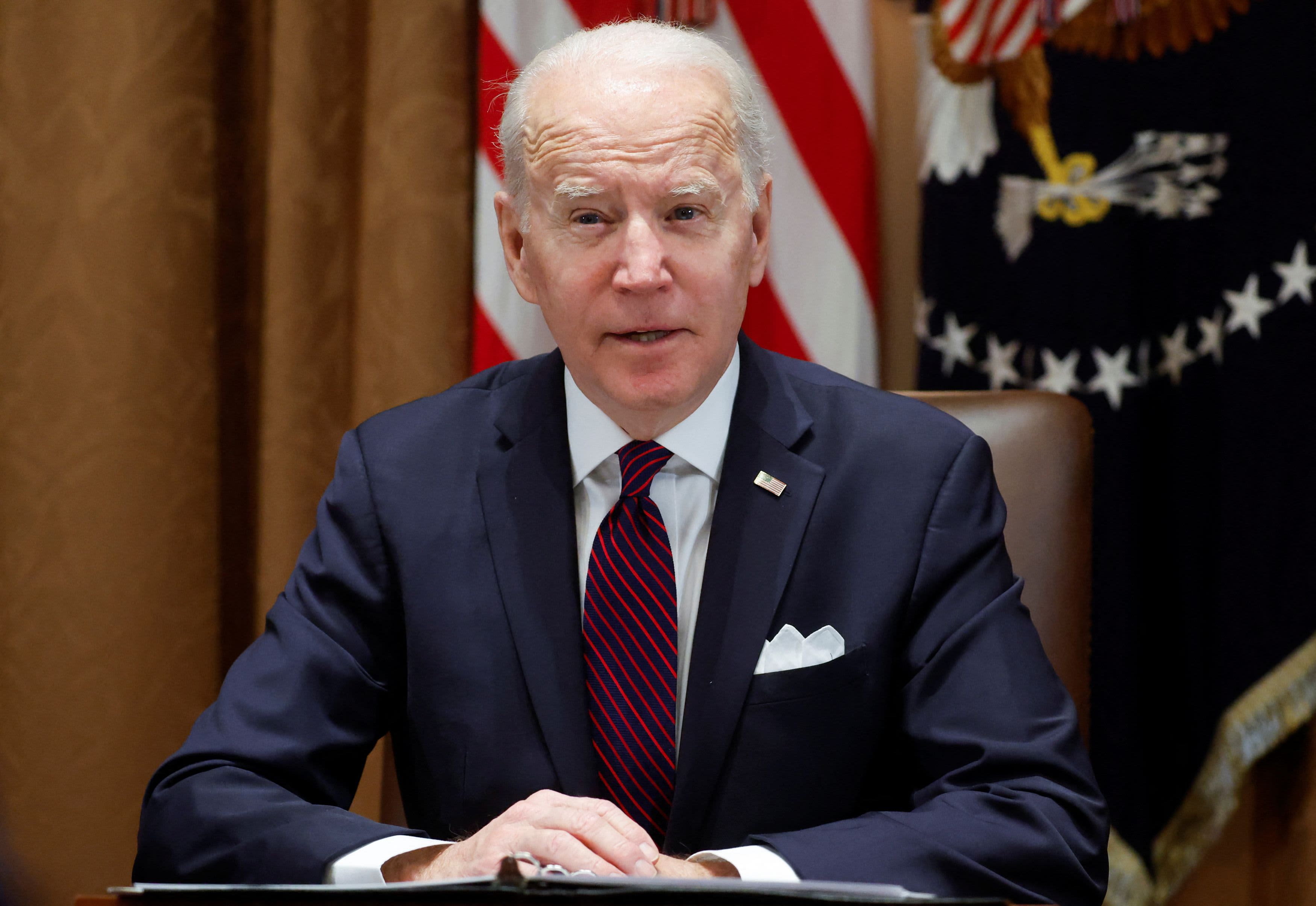Biden talks with European leaders as situation at Ukraine-Russia border deteriorates

U.S. President Joe Biden speaks to reporters on the situation in Ukraine before a meeting with his Infrastructure Implementation Task Force, in the Cabinet Room at the White House, in Washington, U.S., January 20, 2022.
Jonathan Ernst | Reuters
WASHINGTON – President Joe Biden spoke with European leaders Monday afternoon as he mulls the option of deploying military personnel and equipment to the region amid the rapidly deteriorating security situation at Ukraine’s border with Russia.
Biden spoke via secure video for nearly 90 minutes with European Commission President Ursula von der Leyen, European Council President Charles Michel, President Emmanuel Macron of France, Chancellor Olaf Scholz of Germany, Prime Minister Mario Draghi of Italy, President Andrzej Duda of Poland, Prime Minister Boris Johnson of the United Kingdom and NATO Secretary-General Jens Stoltenberg.
The leaders discussed their concern about Russia’s military build-up on Ukraine’s borders and expressed their support for Ukraine’s sovereignty, the White House said in a readout of the call.
“The leaders also discussed their joint efforts to deter further Russian aggression against Ukraine, including preparations to impose massive consequences and severe economic costs on Russia for such actions as well as to reinforce security on NATO’s eastern flank,” the White House said.
A senior administration official, who declined to be identified in order to share unannounced details, told NBC News that while conversations are underway with NATO countries about sending troops to Eastern Europe, Biden has not yet ordered a deployment.
Pentagon spokesman John Kirby said Tuesday that Secretary of Defense Lloyd Austin placed approximately 8,500 U.S. personnel on “heightened alert” should NATO activate a response force known as the NRF.
“The NRF is a multinational force made up of land, air, maritime and special operations forces, all components that the alliance can deploy on short notice wherever needed,” Kirby said, adding that no such activation of the NRF has occurred.
Kirby said that the NATO alliance would need to activate the NRF in order for the majority of the 8,500 U.S. troops to deploy to Europe.
“I’m not going to get into talking about their [Russian] troop movements but they continue to add battalion tactical groups to their western border with Ukraine,” Kirby said, adding that “They have not only shown no signs of de-escalating. They are in fact adding more force capability.”
The Russians have amassed more than 100,000 troops and equipment on its borders with Ukraine and in recent days, deployed additional troops to Belarus.
A BMP-2 amphibious infantry fighting vehicle during field firing practice ahead of the 78th birthday of the guards tank army of the Western Military District at the Golovenki range outside Moscow.
Sergei Bobylev | TASS | Getty Images
The latest revelations come as the State Department issued an order Sunday evening for eligible family members of personnel at its embassy in Kyiv to leave the country due to the deteriorating security conditions.
The State Department also recommended on Sunday that all U.S. citizens in Ukraine depart the country immediately, citing Russia’s extraordinary military buildup on the border.
“Our recommendation to U.S. citizens currently in Ukraine is that they should consider departing now using commercial or privately available transportation options,” a senior State Department official said Sunday evening on a call with reporters.
“The security conditions, particularly along Ukraine’s border and in Russian-occupied Crimea and in Russia-controlled eastern Ukraine are unpredictable and can deteriorate with little notice,” added the official, who spoke on the condition of anonymity in order to share details.
A second senior State Department official said they were not able to provide the exact number of U.S. citizens residing or currently traveling in Ukraine.
“U.S. citizens are not required to register their travel to a foreign country and we do not maintain a comprehensive list,” explained the official.
“We’re conveying very clearly now that now is the time to leave and that there are means to do that,” explained White House press secretary Jen Psaki when asked about the State Department’s travel advisory.
NATO Secretary-General Jens Stoltenberg told reporters at the alliance headquarters in Brussels that NATO personnel remain in Kyiv. “We of course assess and follow the situation closely but we have not made a decision to withdraw those people working for NATO in Kyiv,” Stoltenberg said.
For months, the West has watched an extraordinary build-up of Russian forces and equipment at its border with Ukraine.
The buildup mimics Russian moves ahead of its 2014 illegal annexation of Crimea, a peninsula on the Black Sea, which sparked an international uproar and triggered a series of sanctions against Moscow. The seizure of Crimea also saw Russia’s removal from the Group of 8, or G-8, referring to the eight major global economies.
Psaki added that the United States alongside NATO allies remain open to a diplomatic resolution with Russia and called on the Kremlin to remove its sizable force posture on the shared border with Ukraine.
“It is Russia who has tens of 1,000s of troops on the border of Ukraine. They have the power to de-escalate and we would certainly welcome that,” she added.




